3-Aminocarbonylphenylboronic acid
Synonym(s):3-Carbamoylphenylboronic acid
- CAS NO.:351422-73-6
- Empirical Formula: C7H8BNO3
- Molecular Weight: 164.95
- MDL number: MFCD03411948
- SAFETY DATA SHEET (SDS)
- Update Date: 2023-05-11 17:09:24
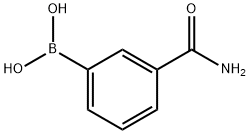
What is 3-Aminocarbonylphenylboronic acid?
Chemical properties
White to brown solid
The Uses of 3-Aminocarbonylphenylboronic acid
Reactant involved in the synthesis of a variety of inhibitors including:• ;Orally active phosphodiesterase 10A inhibitors1• ;Pyrimidine derivatives as TpI2 kinase inhibitors2• ;Peptidomimetic inhibitors of STAT3 protein3Reactant involved in:• ;Oxidative cross-coupling with mercaptoacetylenes4• ;Trifluoromethylation via a Collidine trifluoromethylating agent5• ;Suzuki cross-coupling reactions6
The Uses of 3-Aminocarbonylphenylboronic acid
suzuki reaction
The Uses of 3-Aminocarbonylphenylboronic acid
Reactant involved in the synthesis of a variety of inhibitors including:
- Orally active phosphodiesterase 10A inhibitors
- Pyrimidine derivatives as TpI2 kinase inhibitors
- Peptidomimetic inhibitors of STAT3 protein
Reactant involved in:
- Oxidative cross-coupling with mercaptoacetylenes
- Trifluoromethylation via a Collidine trifluoromethylating agent
- Suzuki cross-coupling reactions
Properties of 3-Aminocarbonylphenylboronic acid
| Melting point: | 221-226 °C |
| Boiling point: | 408.1±47.0 °C(Predicted) |
| Density | 1.32±0.1 g/cm3(Predicted) |
| storage temp. | 2-8°C |
| solubility | soluble in Methanol |
| form | Solid |
| pka | 7.84±0.10(Predicted) |
| color | White to off-white |
| CAS DataBase Reference | 351422-73-6(CAS DataBase Reference) |
Safety information for 3-Aminocarbonylphenylboronic acid
| Signal word | Warning |
| Pictogram(s) |
 Skull and Crossbones Acute Toxicity GHS06  Exclamation Mark Irritant GHS07 |
| GHS Hazard Statements |
H301:Acute toxicity,oral H302:Acute toxicity,oral H315:Skin corrosion/irritation H319:Serious eye damage/eye irritation H335:Specific target organ toxicity, single exposure;Respiratory tract irritation |
| Precautionary Statement Codes |
P261:Avoid breathing dust/fume/gas/mist/vapours/spray. P264:Wash hands thoroughly after handling. P264:Wash skin thouroughly after handling. P270:Do not eat, drink or smoke when using this product. P280:Wear protective gloves/protective clothing/eye protection/face protection. P305+P351+P338:IF IN EYES: Rinse cautiously with water for several minutes. Remove contact lenses, if present and easy to do. Continuerinsing. P405:Store locked up. P501:Dispose of contents/container to..… |
Computed Descriptors for 3-Aminocarbonylphenylboronic acid
New Products
Tert-butyl bis(2-chloroethyl)carbamate 4-Methylphenylacetic acid N-Boc-D-alaninol N-BOC-D/L-ALANINOL N-octanoyl benzotriazole 3-Morpholino-1-(4-nitrophenyl)-5,6-dihydropyridin- 2(1H)-one Furan-2,5-Dicarboxylic Acid DIETHYL AMINOMALONATE HYDROCHLORIDE 1,1’-CARBONYLDIIMIDAZOLE R-2-BENZYLOXY PROPIONIC ACID 1,1’-CARBONYLDI (1,2-4 TRIAZOLE) N-METHYL INDAZOLE-3-CARBOXYLIC ACID (2-Hydroxyphenyl)acetonitrile 4-Bromopyrazole 5-BROMO-2CYANO PYRIDINE 5,6-Dimethoxyindanone 5-broMo-2-chloro-N-cyclopentylpyriMidin-4-aMine 2-(Cyanocyclohexyl)acetic acid 4-methoxy-3,5-dinitropyridine 1-(4-(aminomethyl)benzyl)urea hydrochloride 2-aminopropyl benzoate hydrochloride diethyl 2-(2-((tertbutoxycarbonyl)amino) ethyl)malonate tert-butyl 4- (ureidomethyl)benzylcarbamate Ethyl-2-chloro((4-methoxyphenyl)hydrazono)acetateRelated products of tetrahydrofuran

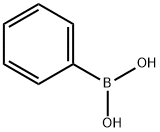
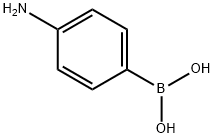

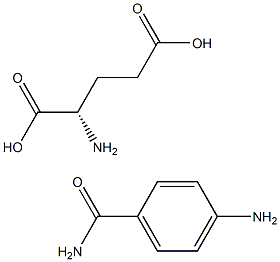

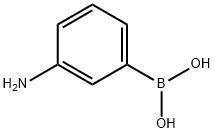

You may like
-
 3-Carbamoylphenylboronic Acid (contains varying amounts of Anhydride) CAS 351422-73-6View Details
3-Carbamoylphenylboronic Acid (contains varying amounts of Anhydride) CAS 351422-73-6View Details
351422-73-6 -
 1975-50-4 98%View Details
1975-50-4 98%View Details
1975-50-4 -
 2-HYDROXY BENZYL ALCOHOL 98%View Details
2-HYDROXY BENZYL ALCOHOL 98%View Details
90-01-7 -
 2-Chloro-1,3-Bis(Dimethylamino)Trimethinium Hexafluorophosphate 221615-75-4 98%View Details
2-Chloro-1,3-Bis(Dimethylamino)Trimethinium Hexafluorophosphate 221615-75-4 98%View Details
221615-75-4 -
 61397-56-6 CIS BROMO BENZOATE 98%View Details
61397-56-6 CIS BROMO BENZOATE 98%View Details
61397-56-6 -
 14714-50-2 (2-Hydroxyphenyl)acetonitrile 98+View Details
14714-50-2 (2-Hydroxyphenyl)acetonitrile 98+View Details
14714-50-2 -
 118753-70-1 98+View Details
118753-70-1 98+View Details
118753-70-1 -
 733039-20-8 5-broMo-2-chloro-N-cyclopentylpyriMidin-4-aMine 98+View Details
733039-20-8 5-broMo-2-chloro-N-cyclopentylpyriMidin-4-aMine 98+View Details
733039-20-8
Statement: All products displayed on this website are only used for non medical purposes such as industrial applications or scientific research, and cannot be used for clinical diagnosis or treatment of humans or animals. They are not medicinal or edible.